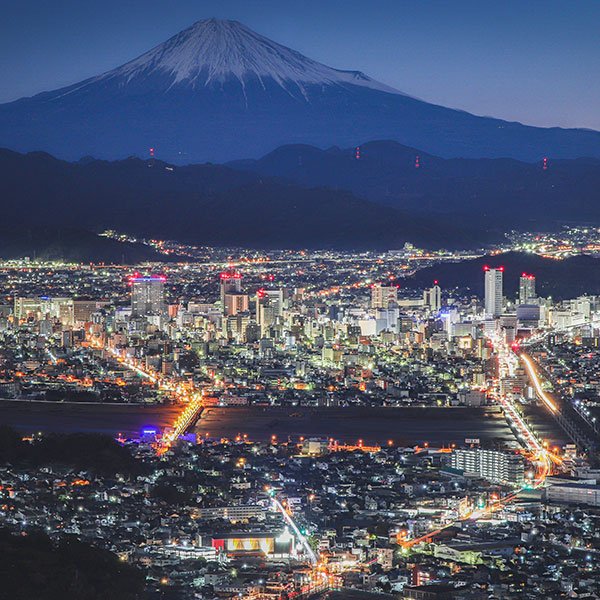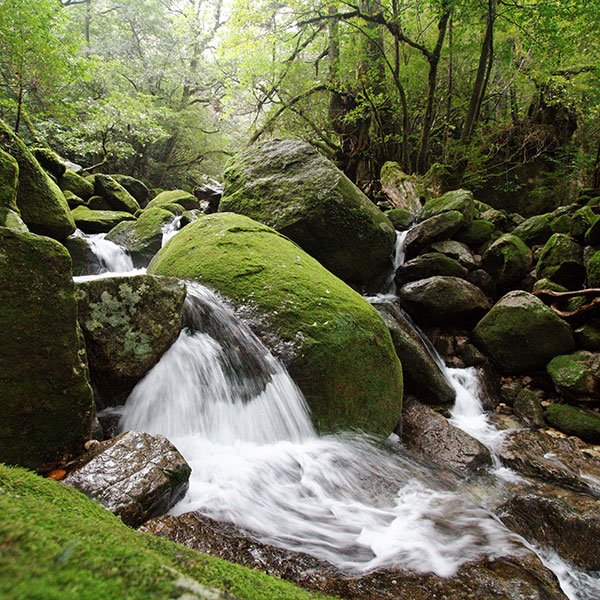15 Iconic Japanese Mountains You Must Visit
by Cassandra Lord | TRAVEL
Photo by Tommy Silver, Mount Fuji
Japan is a great country for hikers. With mountains covering around three quarters of the country, it feels like almost anywhere you go you’ll be able to spot a beautiful mountain somewhere in the distance, or right up close!
Whether you’re looking for a good hike, or just want to get a picturesque mountain shot, with so many mountains around the country, it can be overwhelming knowing where to start. So here are 15 of the most iconic mountains in Japan, and where to find them.
1. Mt Fuji (Shizuoka)
Photo by Leon He, Mt Fuji
The most iconic of them all is of course, Mt Fuji. Its clean and recognisable shape stands at 3,776m (12,388ft), and is the tallest mountain in Japan. While technically an active volcano, it has not erupted for over 300 years. It has several hiking routes that are open in the summer, and it looks beautiful year-round.
2. Mt Tsukuba (Ibaraki)
© ptrktn / Creative Commons, Mt Tsukuba
“Fuji in the west, Tsukuba in the east” is an old saying that used to be prevalent in various poems and literature of old. While its notoriety may have subsided, its beauty remains, and with its various hiking trails and a height of only 877m (2877ft), this is a great mountain for beginner hikers, and looks prettiest before sunset, where it takes on a purple hue.
3. Mt Ontake (Nagano)
© Atsushi Ueda / Creative Commons, Mt Ontake
Mt Ontake is the second tallest volcano in Japan after Mt Fuji. The mountain has five beautiful crater lakes and is a sacred mountain of worship. Dedicated hikers are allowed to erect stone monuments on the mountain. At 3,067m (over 10,000ft), it is a popular hiking spot for more serious hikers, but it last erupted as recently as 2014, so caution is recommended.
4. Mt Zao (Yamagata)
Photo by ChampagneFight, Mt Zao
Mt Zao is actually not just one mountain, but a cluster of volcanoes bordering Yamagata and Miyagi prefectures. The central crater lake is called Okama, and is sometimes called the “Five Color Pond” because it changes colors throughout the year. The central peak stands at a height of 1,841m (6,040ft).
5. Mt Kita (Yamanashi)
© kantokuruza / Creative Commons, Mt Kita
Mt Kita is a part of Japan’s southern alps in Yamanashi prefecture. While Mt Ontake is the second tallest volcano, Mt Kita is the second tallest mountain in Japan, standing at 3,193m (10,475ft). Hiking here is a much more serious activity for expert hikers, as it can take days and you are unlikely to see many people along the way.
6. Mt Iwate (Iwate)
© Jase Hill / Creative Commons, Mt Iwate
Standing at 2,038m (6,686ft), Mt Iwate is another volcano sometimes compared to Mt Fuji for its similar shape. It has seven climbing trails, some of which can take up to six hours. It is beautiful throughout the year, and in early spring the snow is said to melt in an eagle silhouette on the rocks.
7. Mt Yotei (Hokkaido)
© Oga / Creative Commons, Mt Yotei
Mt Yotei is another volcano alikened to Mt. Fuji for its shape, giving it the name Ezo Fuji, as Ezo is the ancient name for Hokkaido, where it is located. The mountain stands at 1,898m (6,227ft) tall, and has a variety of scenic viewing spots nearby, such as the sunflower garden at Higashiyama Hana no Oka which has the mountain in the background.
8. Mt Rishiri (Hokkaido)
© Japanexperterna / Creative Commons, Mt Rishiri
Mt Rishiri is a popular hiking spot in a remote location in Hokkaido. It stands at 1,721m (5,646ft), making it a good option for intermediate hikers, and has an opening festival held every year on July 2 or 3 to mark the official opening of the hiking routes.
9. Mt Takao (Tokyo)
© Dick Thomas Johnson / Creative Commons, Mt Takao
Mt Takao is a popular sightseeing spot within Tokyo. The mountain stands at a cute 599m (1,965ft), making it perfect for beginner hikers. There is also a ropeway and chair lift that makes it easy to visit the top and take pictures. On a clear day, you can see Mt Fuji from the peak.
10. Mt Asama (Gunma)
© Seiya Ishibashi / Creative Commons, Mt Asama
Mt Asama is the most active volcano on Japan’s main island, with its most recent eruption being in 2019. It stands at 2,568m (8,425ft), and has plenty of walking trails nearby to get a good view of the impressive mountain. While you can hike it, the top section is roped off as it is often smoking with volcanic activity, so caution must be exercised.
11. Mt Haku (Ishikawa)
© Alpsdake / Creative Commons, Mt Haku
Mt Haku is characterized by its three peaks, the tallest of which stands at 2,702m (8,861ft) tall. The dormant volcano is on the border of Gifu and Ishikawa prefectures, and a round-trip hike can take around eight hours.
12. Mt Kirishima (Miyazaki)
© Soumei Baba / Creative Commons, Mt Krishima
Mt Kirishima is an active volcano range, with its highest peak being Karakuni-dake, standing at 1700m (5,577ft). It is a good place for intermediate hikers or physically fit beginners, as the standard course only takes 90 minutes to the top. From there, there is a beautiful view of the surrounding volcanic range, including the azure blue crater lake below.
13. Mt Nikko Shirane (Gunma)
© TANAKA Juuyoh (田中十洋) / Creative Commons, Mt Nikko Shire
Mt Nikko Shirane is on the border of Gunma and Tochigi prefectures in the beautiful Nikko National Park. Its tallest peak stands at 2,578m (8,458ft), and there are various hiking routes and a ropeway to get near to the top, with a 3-5 hour trail from there.
14. Mt Asahi (Hokkaido)
© nAok0 / Creative Commons, Mt Asahi
Most commonly called Asahi-dake, this mountain stands at 2,290m (7,513ft) tall and can easily be reached by ropeway. It is a popular spot in winter for skiers and snowboarders, and popular for pictures and hiking in autumn. It is an active stratovolcano, so is often letting off steam here and there, and is surrounded by great onsen (hot spring bath) spots.
15. Mt Tate (Toyama)
Photo by Saigen Jiro, Mt Tate
Pronounced “tat-eh”, and most commonly called Tate-yama, this mountain is the most picturesque when viewed from across Mikuri Pond in spring or autumn. Located in Japan’s Northern Alps, it stands at 3,015m (9,891ft) tall, and is a popular hiking spot with a round-trip trail that takes around 3.5 hours.













TRAVEL | December 15, 2023